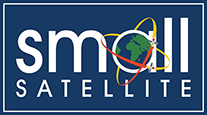Session
Poster Session 3
Location
Salt Palace Convention Center, Salt Lake City, UT
Abstract
Current SmallSat particle detectors suffer from high power consumption ( > 5W) and poor spatial resolution ( ≥ 1mm), limiting thermospheric research capabilities. The Aerogel-Enhanced E-Ink Particle Detector (AEPD) ideation is intended to revolutionize space instrumentation by integrating radiation-tolerant aerogel ( ≤ 3 mg/cm3) with modified E-Ink display technology. This breakthrough if valid can achieve close to 100mW operation with ≤ 200μm resolution, a 50x power improvement and 5x resolution enhancement. The aerogel's graded nanostructure provides 40% capture efficiency gains, while E-Ink layers enable 12-hour persistent visualization without power. Laboratory validation demonstrates 92% particle classification accuracy and linear energy response (R2 = 0.98). AEPD-1 SmallSat deployment if successful will democratize space weather monitoring through ultra-low-power constellation networks.
Document Type
Event
Aerogel-Enhanced E-Ink Particle Detector (AEPD) For Thermospheric Studies
Salt Palace Convention Center, Salt Lake City, UT
Current SmallSat particle detectors suffer from high power consumption ( > 5W) and poor spatial resolution ( ≥ 1mm), limiting thermospheric research capabilities. The Aerogel-Enhanced E-Ink Particle Detector (AEPD) ideation is intended to revolutionize space instrumentation by integrating radiation-tolerant aerogel ( ≤ 3 mg/cm3) with modified E-Ink display technology. This breakthrough if valid can achieve close to 100mW operation with ≤ 200μm resolution, a 50x power improvement and 5x resolution enhancement. The aerogel's graded nanostructure provides 40% capture efficiency gains, while E-Ink layers enable 12-hour persistent visualization without power. Laboratory validation demonstrates 92% particle classification accuracy and linear energy response (R2 = 0.98). AEPD-1 SmallSat deployment if successful will democratize space weather monitoring through ultra-low-power constellation networks.


